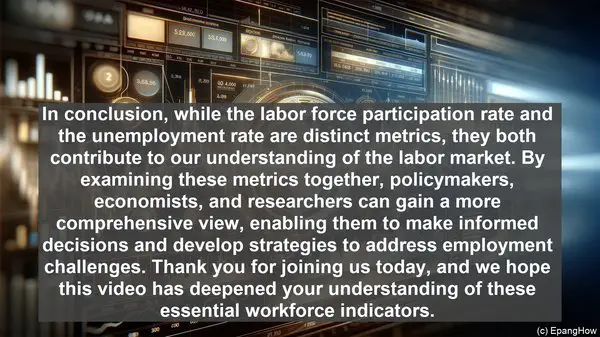Introduction: The Vitality of Workforce Metrics
Hello, and welcome to our article. In today’s discussion, we’ll be focusing on two crucial metrics that provide insights into a country’s labor market: the labor force participation rate and the unemployment rate. While they may seem similar at first glance, they actually represent distinct aspects of employment. So, let’s dive in!
Defining the Labor Force Participation Rate
The labor force participation rate is a measure of the active portion of the population that is either employed or actively seeking employment. It encompasses individuals who are currently working or those who are jobless but actively looking for work. This metric is expressed as a percentage and is calculated by dividing the labor force (employed + unemployed) by the total working-age population.
Unraveling the Unemployment Rate
On the other hand, the unemployment rate specifically focuses on the percentage of the labor force that is jobless and actively seeking employment. It excludes those who are not in the labor force, such as retirees, students, or individuals who have chosen not to work. This metric is often seen as a key indicator of economic health, as higher unemployment rates can signify a lack of job opportunities or a downturn in the economy.
Interpreting the Significance
While both metrics provide valuable insights, they offer different perspectives on the labor market. The labor force participation rate, for instance, can indicate the level of interest and engagement in the workforce. A high participation rate suggests a robust labor market, with many individuals actively seeking employment. On the other hand, a low participation rate may indicate factors such as discouragement or a lack of available jobs.

The Multi-faceted Nature of Unemployment
The unemployment rate, as mentioned earlier, is a more focused metric. It highlights the proportion of individuals who are actively looking for work but are unable to find employment. However, it’s important to note that this metric alone may not provide a complete picture. For example, it doesn’t account for individuals who may have given up searching for work or those who are underemployed, i.e., working part-time when they desire full-time employment.
Factors Influencing the Metrics
Various factors can impact both the labor force participation rate and the unemployment rate. Economic conditions, such as recessions or periods of growth, can significantly influence these metrics. Additionally, societal factors, such as changing demographics or cultural shifts, can also play a role. For instance, an aging population may result in a lower participation rate, as more individuals transition into retirement.

